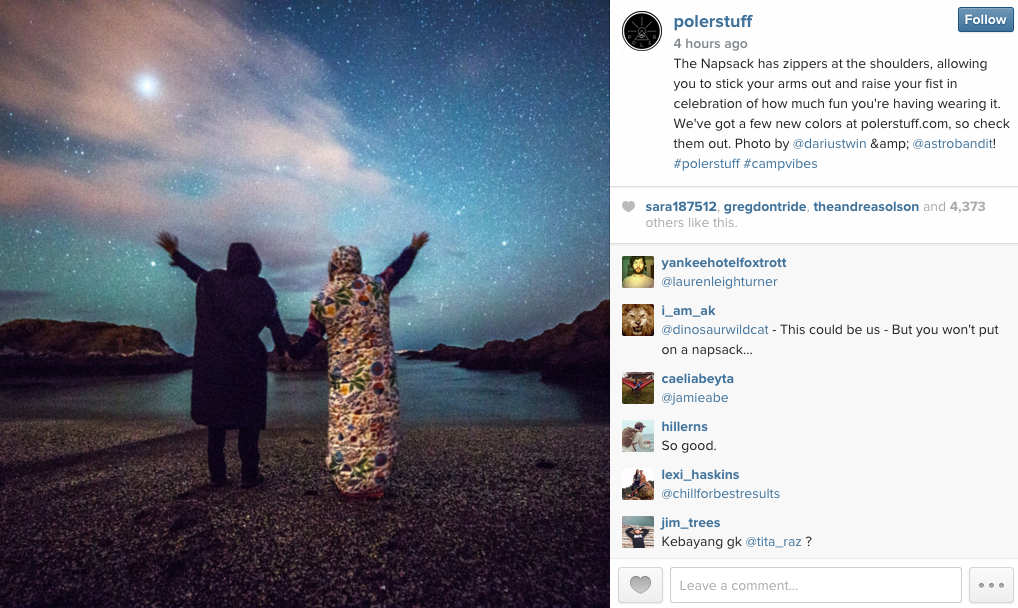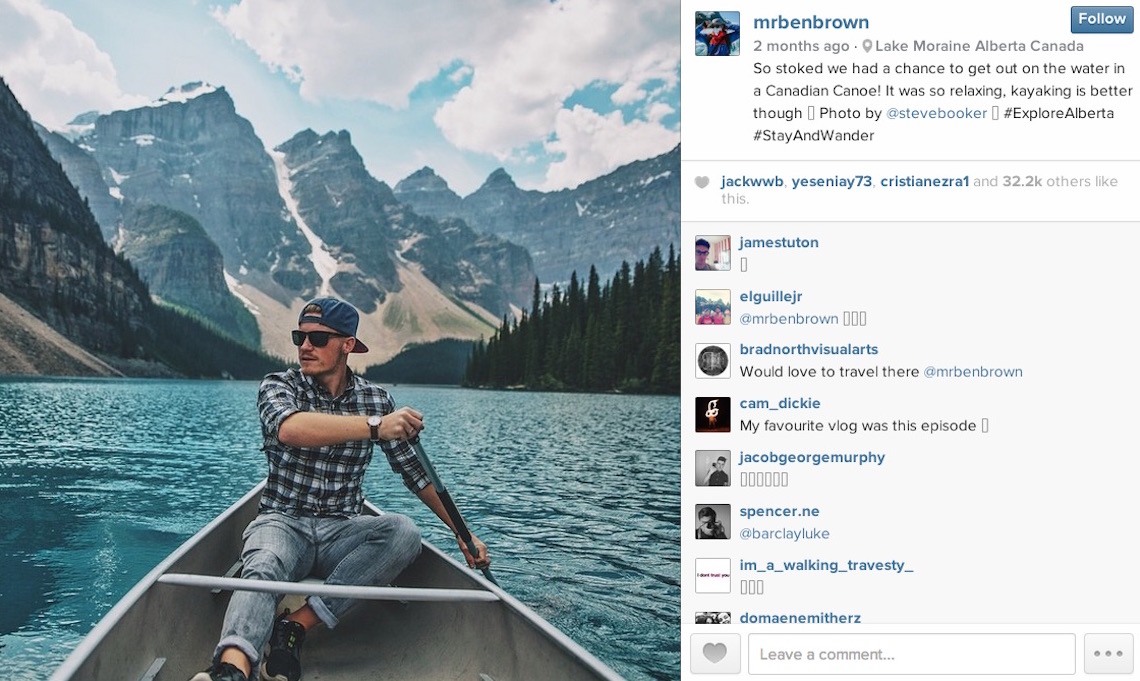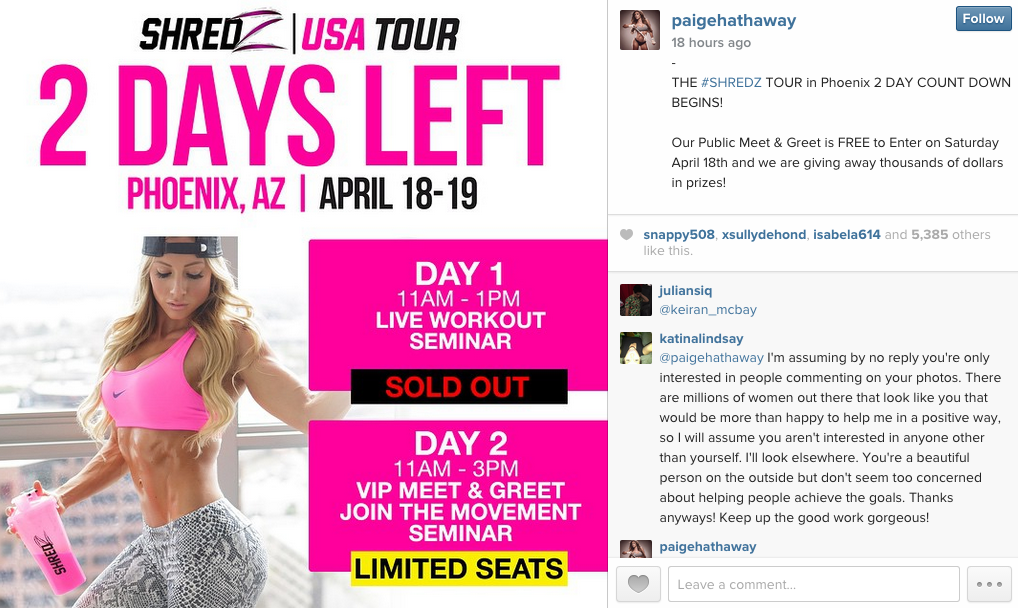By Chris Jensen – Jr. Communications Coordinator
My colleague Erica Schlesinger shared in a recent blog post that we remember 80% of what we see, compared to 20% of what we read and 10% of what we hear. So, it makes sense that we gravitate toward photos and videos over text.
As a general rule, social media posts perform better when they’re accompanied by a visual. Visuals, like photos and videos, score more likes, follows and comments. For these reasons, more companies are steering toward Instagram as a key marketing platform.
Instagram only recently allowed advertisements in the feed, so influencer marketing has been the primary way for brands to market to consumers on the app. Instagram differs from Facebook as ads are reserved for large companies who are willing to shell out around $350,000–$1 million a month. For smaller brands that wish to reach a niche group, influencer marketing is the way to go.

Instagram: Best Social Network for Engagement
The true power of Instagram is the high rate of engagement and active user base of the mobile app. Studies have found that Instagram engagement rates are up to 58 times higher than that of Facebook and 120 times higher than Twitter.
Forrester analyst Nate Elliott once stated, “On six of the seven social networks, the brands we studied achieved an engagement rate of less than 0.1%. For every 1 million Facebook fans those brands had collected, each of their posts received only about 700 likes, comments, and shares. On Twitter, the ratio was about 300 interactions per 1 million followers.” Instagram is the outlier with 4.21% engagement. Although that may sound low, it’s significantly better than Facebook’s .07%.
Why Influencers Matter
Influencer marketing is all about relationships. Brands can benefit from developing relationships with popular influencers who have extensive reach and are willing to vouch for their product or service. When a tastemaker you trust recommends a product, it’s likely that you’ll listen.
In fact, when a consumer is contemplating a purchase, they look to more sources than the brand itself. A Nielsen study found that 84% of the public trusts recommendations from people they know and 68% trust consumer opinions posted online. In today’s digital age, many people treat social media the same way they would a face-to-face interaction, therefore putting trust in the individuals they follow.
Finding the Right Influencer
Most people wouldn’t trust an athlete to review a new software program, yet they will probably listen to his or her opinion on sportswear and nutrition products. Vice versa, a tech guru might not be your best bet to market a new fashion line but would be the ideal candidate to test and share a new app. It’s key to not only find an influencer with plenty of reach, but the type of reach you’re looking for.
A brand doesn’t need celebrities and athletes to promote their products; a “normal” person with a broad reach will do just fine. There are thousands of people with a variety of interests and large followings on Instagram. Targeting the right ones is the important part.
Forbes contributor Kyle Wong uses the following equation to determine how to choose an influencer:
Influence = Audience Reach (# of followers) x Brand Affinity (expertise and credibility) x Strength of Relationship with Followers
You can find influencers through hashtag research, skimming related profiles or navigating the ‘popular’ bar. Keep in mind their followers should be similar to your target demographic. If possible, reach out via email to your choice influencer. If email is not an option, a direct message on Instagram should work just fine.
Once you find the right influencer and settle on a deal, they will typically share images of the sponsored product or service with their Instagram followers. The approach is almost always organic and natural, rather than a blatant promotion. Sometimes, the product is not even mentioned.
While many companies have found this method successful, the nutritional supplement company SHREDZ stands out as a leader. SHREDZ only made $90,000 in 2012, but after partnering with a little-known fitness model, Paige Hathaway, the brand jumped to $5 million in gross revenue by the end of 2013. SHREDZ achieved these numbers with just a small team and digital promotion. At the beginning of the partnership, Hathaway had 8,000 followers; she has grown to over 1.8 million in a span of three years.
Poler Outdoor Stuff’s Instagram is another prime example of non-invasive influencer marketing. By incorporating their backpacks and products into posts sporting the scenic and outdoorsy persona they strive for, the company successfully reaches thousands of like-minded consumers. They have teamed up with dozens of influencers, such as photographers and action sports athletes, to subtly showcase their products. With the help of these “insta-celebs,” consumers from around the globe see their products being used in the outdoors, encouraging a purchase that’s inspired by a lifestyle.

Instagram boasts an engaging community with a wide variety of easily accessible influencers. If you’re looking to improve your social visibility and drive consumer product sales, Instagram influencer marketing can be a powerful tool.
Let us know if you would like some guidance with your own “Insta-Marketing.” (W)right On is glad to start or assist in an Instagram campaign.


 Looking at past trends in an evolving industry can be a poor predictor of future trends—whether you’re talking about the stock market or the PR field.
Looking at past trends in an evolving industry can be a poor predictor of future trends—whether you’re talking about the stock market or the PR field.











 Grant Wright
Grant Wright Corie Fiebiger
Corie Fiebiger
 Shae Geary
Shae Geary Phelan Riessen
Phelan Riessen Katrina Early
Katrina Early Hamish Marshall
Hamish Marshall